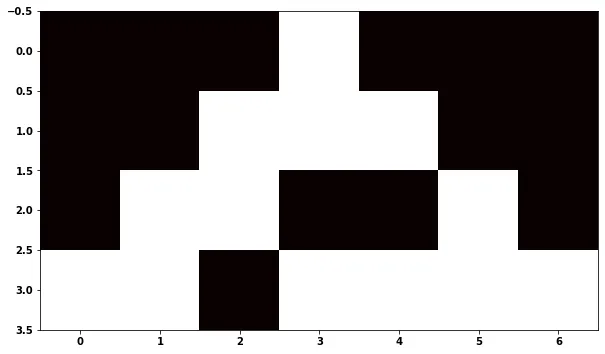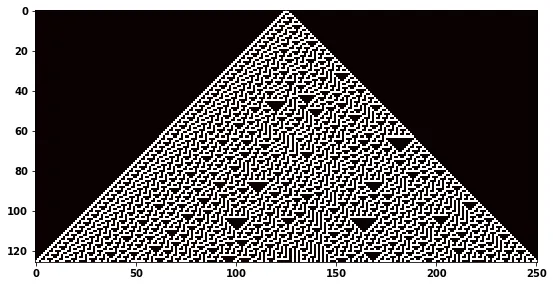规则30是一种一维元胞自动机,当前的一代仅考虑上一代中的单元格。一个单元格可以处于两个状态之一:1或0。创建下一代的规则在下面的行中表示,并取决于当前单元格上方的单元格以及其相邻单元格。
该元胞自动机使用以下规则进行应用(使用位运算符):
left_cell ^ (central_cell | right_cell)
这个规则形成了下面的表格: 现在我尝试用 numpy 在 Python 中实现这些规则。我定义了一个初始状态,接受 width 作为参数,并生成一个以 1 为中心的全零初始行。
def initial_state(width):
initial = np.zeros((1, width), dtype=int)
if width % 2 == 0:
initial = np.insert(initial, int(width / 2), values=0, axis=1)
initial[0, int(width / 2)] = 1
return initial
else:
initial[0, int(width / 2)] = 1
return initial
下面的函数根据给定的初始行生成第二代。如何创建一个for循环,一直生成新的后代,直到最后一行底部的第一个元素变为1?
def rule30(array):
row1 = np.pad(array,[(0,0), (1,1)], mode='constant')
next_row = array.copy()
for x in range(1, array.shape[0]+1):
for y in range(1, array.shape[1]+1):
if row1[x-1][y-1] == 1 ^ (row1[x-1][y] == 1 or row1[x-1][y+1] == 1):
next_row[x - 1, y - 1] = 1
else:
next_row[x - 1, y - 1] = 0
return np.concatenate((array, next_row))
例如,如果输入为
A = [0, 0, 0, 1, 0, 0, 0]
输出应该是:
>>> print(rule30(A))
[[0, 0, 0, 1, 0, 0, 0],
[0, 0, 1, 1, 1, 0, 0],
[0, 1, 1, 0, 0, 1, 0],
[1, 1, 0, 1, 1, 1, 1]]



rule30实现为一个函数,它接受一个状态并返回下一个状态,则可能更加直观,而不是填充现有的二维数组直到完成。 - Ry-